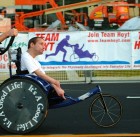Viewing: ELA
September 24, 2018
Starting Homework
Hello, families! Today, we’re kicking off our homework routines. They’re quite a bit different from past years, but I strongly believe we’re improving the learning process for kids in making these changes. Each week, students will receive a single math assignment. It is intended to be completed over multiple nights and will cover a variety of topics that we’ve taught in prior weeks. The idea is that the concepts on the homework aren’t BRAND new and, instead, are ones with which students have had a good amount of practice. (We all know how frustrating it is for students – and families – when they bring home a worksheet based on the day’s challenging lesson, and come home thoroughly baffled! That doesn’t help anyone! By basing the week’s homework on past weeks’ skills, ones they’ve practiced and applied, I’m hopeful that students will feel more confident and proficient.) When there’s something on the homework that I expect will be unfamiliar to parents, I will do my best to send out a video to help families understand the strategy we’re using in class. Tonight, for example, you’ll see two items that involve renaming numbers. (2,900 = __ hundreds, for example.) Here is a pair of videos to bring you up to speed on the strategy I’ve taught students.
Homework for reading and writing will take more of a varied form. Sometimes, it will be an activity directly tied to a skill we’re working on in class. For example, this week, students will be asked to keep track of the thoughts they have as they read. (We’ve been working on this a lot in class.) Other times, students will be given an assignment tied to the book they’re reading at home. Or their homework may set the groundwork for an upcoming lesson.
Remember, students always have free-choice reading for homework (around 30 minutes), and they should always take time to practice those often-elusive math facts. Stay tuned for ideas on both of these responsibilities.
If you ever have any questions about homework or anything else, please feel free to contact me!
Posted in Class Updates|By Jon Moss
September 12, 2016
Video and Slides from Curriculum Night
Click here to download the PDF of my 2016-2017 Curriculum Night presentation!
Posted in Class Updates|By Jon Moss
April 22, 2014

Learning About Timelines through Team Hoyt
Our class has been working to learn about timelines lately as part of a social studies and ELA (English/Language Arts) integrated unit. The Boston Marathon was perfectly timed to be a valuable teaching tool for this study. Each year, I talk to the kids about two remarkable athletes: Dick and Rick Hoyt. Dick Hoyt is a father who, each year, runs in the Boston Marathon and pushes his son, Rick, who has cerebral palsy. They are true inspirations, just like the athletes yesterday who found a fellow marathon runner who had collapsed just shy of of the marathon’s end and carried him across the finish line. The Boston Marathon is full of remarkable athletes who model outstanding character, sportsmanship, and integrity!
I came across an article that taught a bit about Dick and Rick Hoyt’s amazing history, and I immediately saw the potential for it to be used as a learning tool for our study of timelines. We read the article in class today, and for homework, kids are identifying and writing short blurbs about the different events listed in the article. (Just a couple of words per event is fine.) We’ll use the kids’ ideas as a jumping off point for making a timeline tomorrow.
The article does mention (in general terms) the attacks that happened at last year’s Boston Marathon. We discussed in class only that something sad happened and that some people were injured or lost their lives, although some students (on their own) brought up more detail about what had happened when we discussed the marathon yesterday. I didn’t want to go into any significant detail about what had happened, and I refocused the discussion to the message of perseverance and honoring others (since Dick and Rick ran the marathon yesterday as a tribute to those who were affected by the attacks last year.
You can except, over the next few years, to see an ongoing integration of ELA and social studies. The two fit together very well since the Common Core places an increased emphasis on non-fiction reading and writing, and articles such as this give teachers a wonderful opportunity to bridge social studies work with literacy work. Our next step in our timelines study will have the kids partner up to read articles about a famous figure from history and to develop a timeline based upon the information they pull from the article. Stay tuned!
Posted in Class Updates|By Jon Moss
